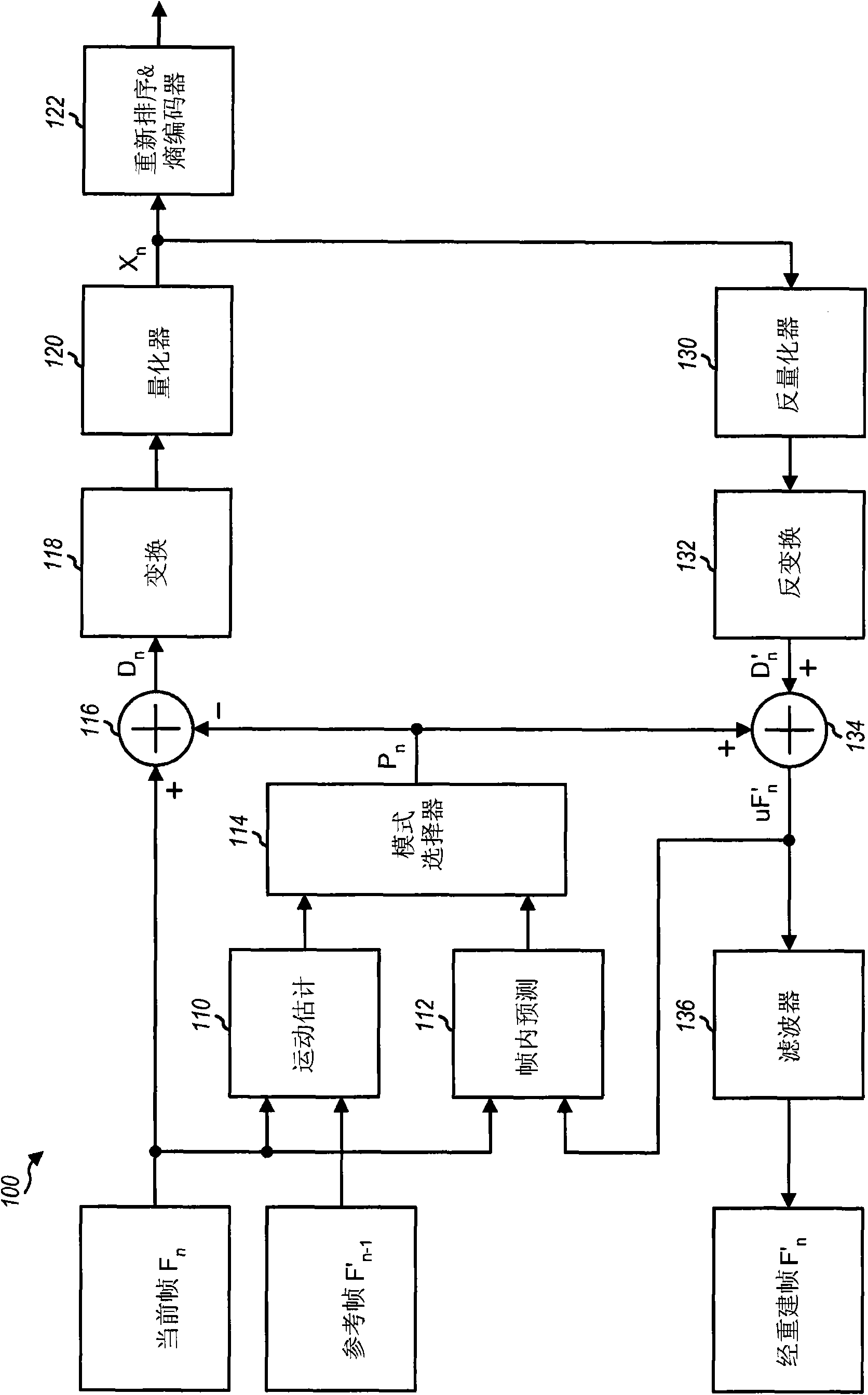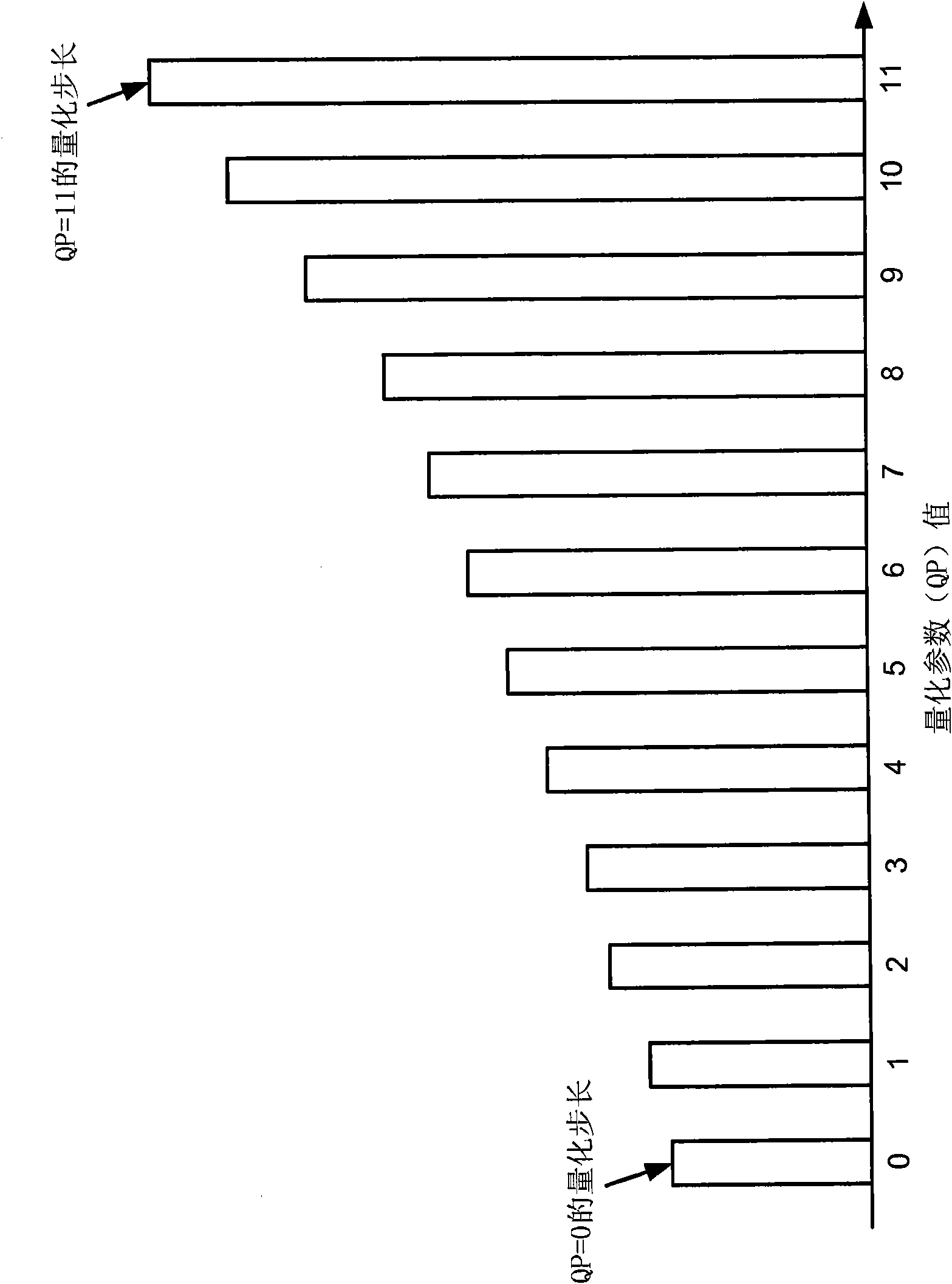Distortion estimation for quantized data
A technology of quantizing step size and coefficient, applied in the field of data processing, which can solve the problems of roughness, multi-distortion, large error between input data and quantized data, etc.
- Summary
- Abstract
- Description
- Claims
- Application Information
AI Technical Summary
Problems solved by technology
Method used
Image
Examples
Embodiment Construction
[0018] The distortion estimation techniques described herein can be used in various encoding systems capable of quantizing data. The techniques can also be used for various types of data, such as video data, audio data, and the like. The techniques can further be used in various encoding standards such as JPEG, MPEG-1, MPEG-2, MPEG-4 (Part 2), H.261, H.263, H.264, etc. For clarity, certain aspects of the technology are described below for H.264, entitled "Advanced video coding for generic audiovisual services", also commonly referred to as MPEG-4 No. 10 parts.
[0019] figure 1 A block diagram of an encoding system 100 usable for H.264 and possibly other standards is shown. The encoding system 100 receives the current frame F to be encoded n And generate encoded data of the frame. In general, a frame can have any height and width dimensions and can be divided into macroblocks. For H.264, each macroblock may contain 16x16 picture elements (pixels) and may be further divid...
PUM
 Login to View More
Login to View More Abstract
Description
Claims
Application Information
 Login to View More
Login to View More - R&D
- Intellectual Property
- Life Sciences
- Materials
- Tech Scout
- Unparalleled Data Quality
- Higher Quality Content
- 60% Fewer Hallucinations
Browse by: Latest US Patents, China's latest patents, Technical Efficacy Thesaurus, Application Domain, Technology Topic, Popular Technical Reports.
© 2025 PatSnap. All rights reserved.Legal|Privacy policy|Modern Slavery Act Transparency Statement|Sitemap|About US| Contact US: help@patsnap.com



